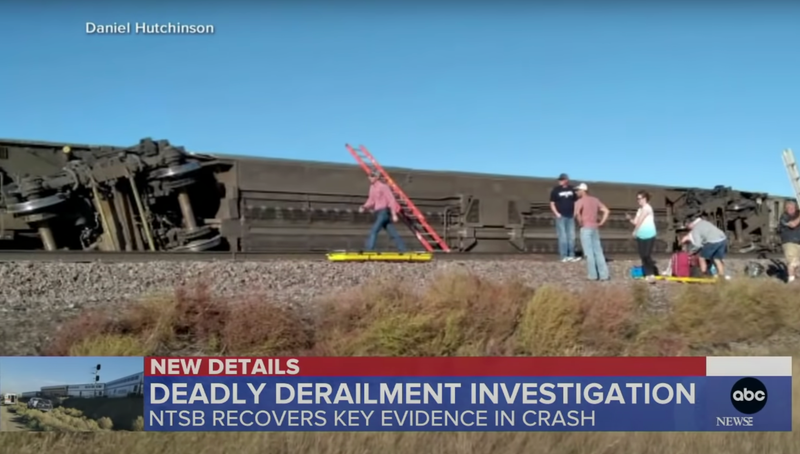Overworked Inspector Missed Major Track Problems Two Days Before Deadly Amtrak Derailment: Report

The problems in the railroad industry right now comes down to one thing; employees are forced to overwork to make up for staffing deficiencies in the name of profits. It’s a philosophy that we’ve seen time and time again that disregards the health and safety of railroad employees and the general public. A new report on a fatal 2021 Amtrak crash on a freight railroad sheds light on just how brutal the culture of “precision scheduled railroading” has become.
Aaron Gordon has a fantastic breakdown over on Vice of the National Transportation Safety Board’s investigation into the derailment of the Amtrak train Empire Builder as it ran through Joplin, Montana, on BNSF rail lines. The feds found the track was in bad condition, leading to the crash which killed three people and injured 49 more. It sounds like the person responsible for checking the track may have been suffering under some precision scheduling. From Vice:
Read more
Federal law requires tracks carrying regularly scheduled passenger trains to be inspected twice weekly. The worn track was inspected just two days prior to the derailment. But detecting unsafe tracks is a tricky, skilled job that requires a keen eye, attention to detail, and deep familiarity with the particular track segment.
[...]
According to the report, the inspector was overworked and responsible for too much track. In an interview investigators conducted three days after the crash, the track inspector said he had been “covering four positions most of the summer.” When asked how he managed the workload, he replied, “A lot of seven-day work weeks” and that he had been averaging 100 hours of work per week.
In the three days leading up to the inspection of the damaged track, the track inspector worked 16 hours, 12 hours 45 minutes, and 13 hours 30 minutes, respectively, for a total of more than 42 hours in three days. On the day of the track inspection, he was responsible for inspecting 126.8 miles of track. The NTSB concluded this workload “results in reduced performance proficiency.” The NTSB also found the inspector’s workload prevented him from doing a walking inspection of the route which would have “ensured an understanding of track conditions.”
That’s a totally unacceptable workload for an inspector responsible for such a safety-critical piece of equipment. It’s the actual rail part of the railroads, guys. That much has got to work.

 Yahoo Autos
Yahoo Autos 